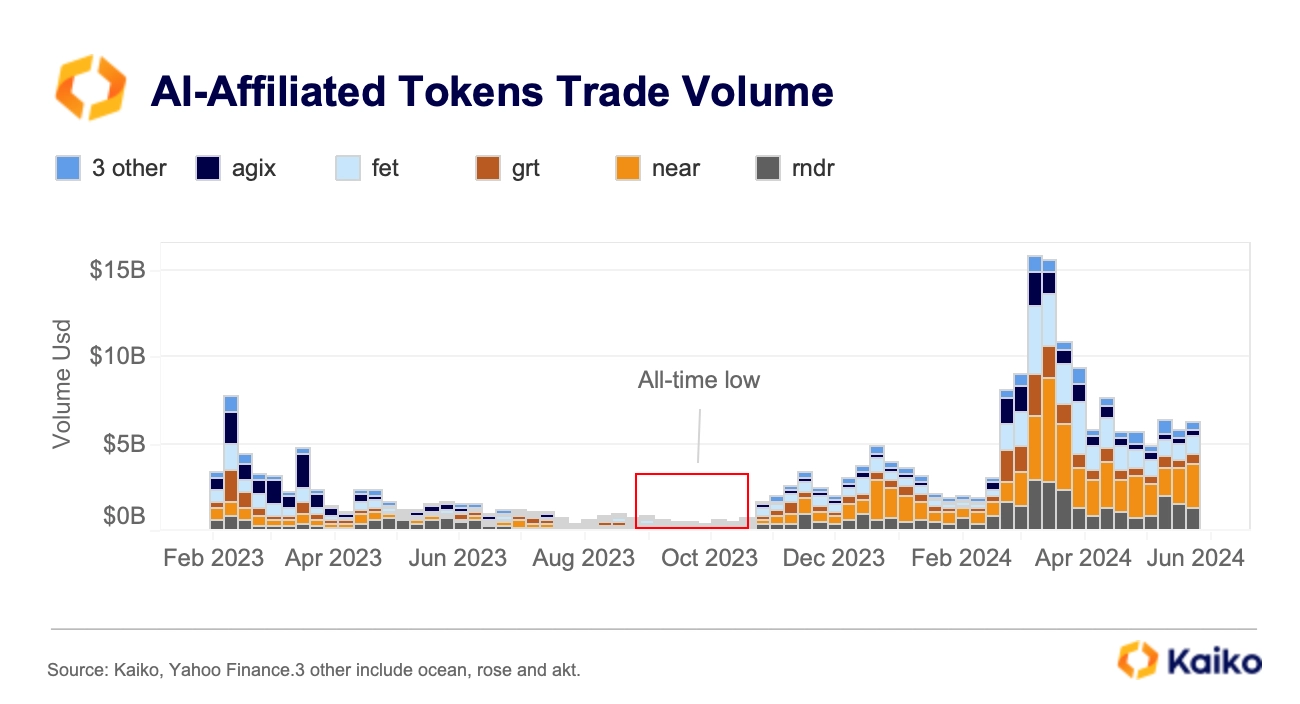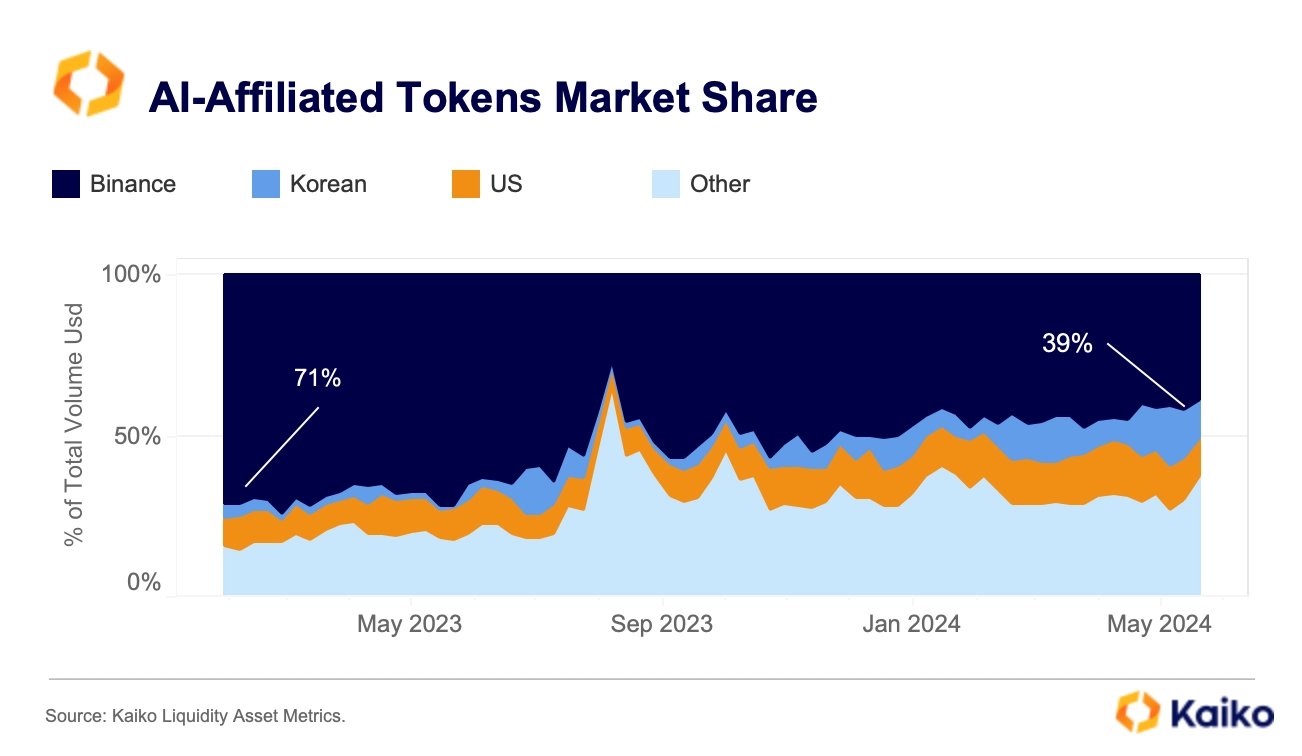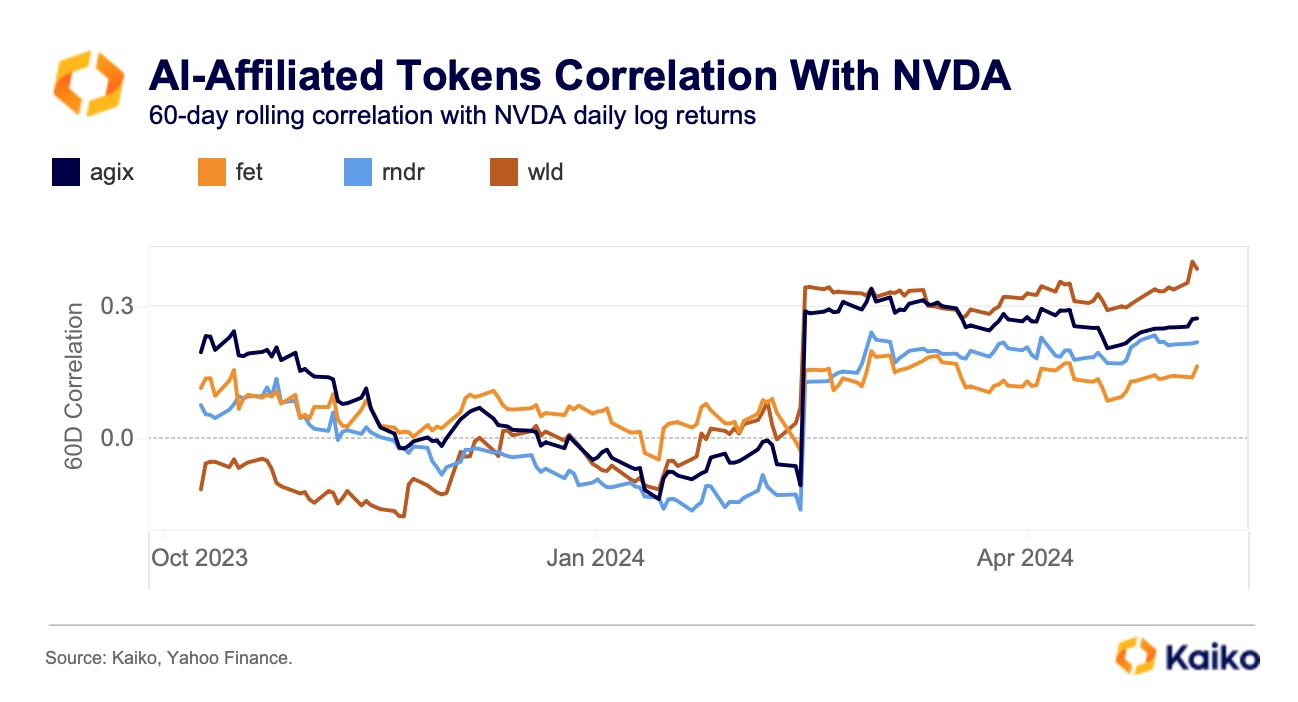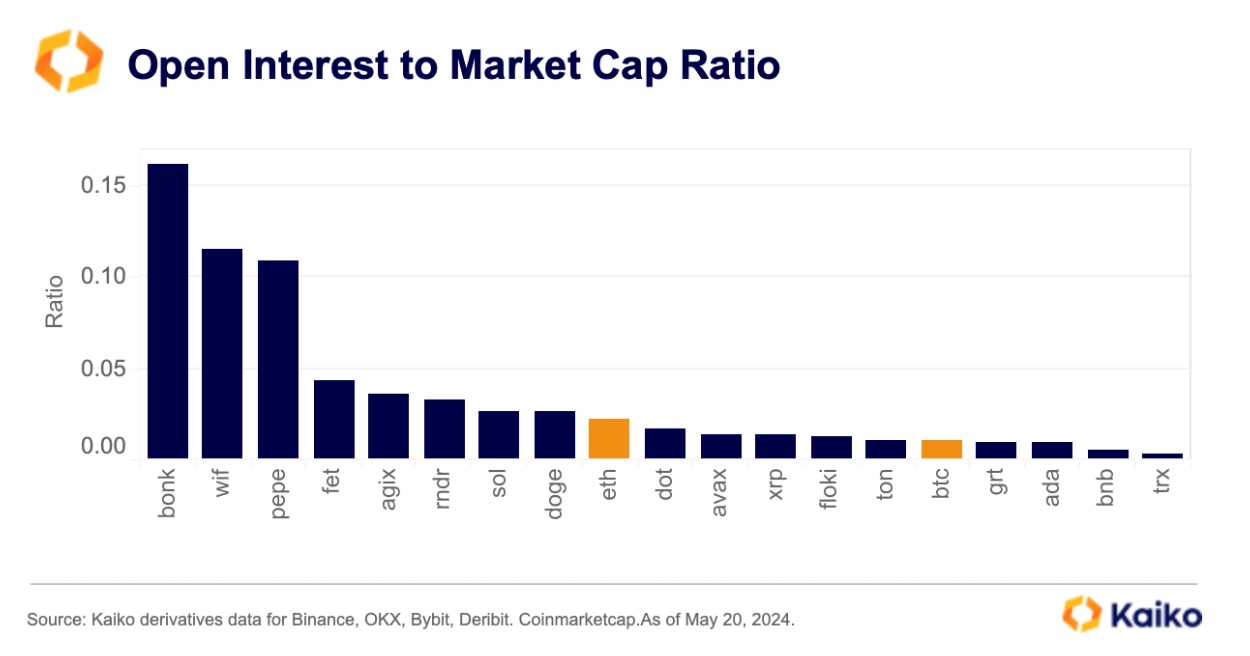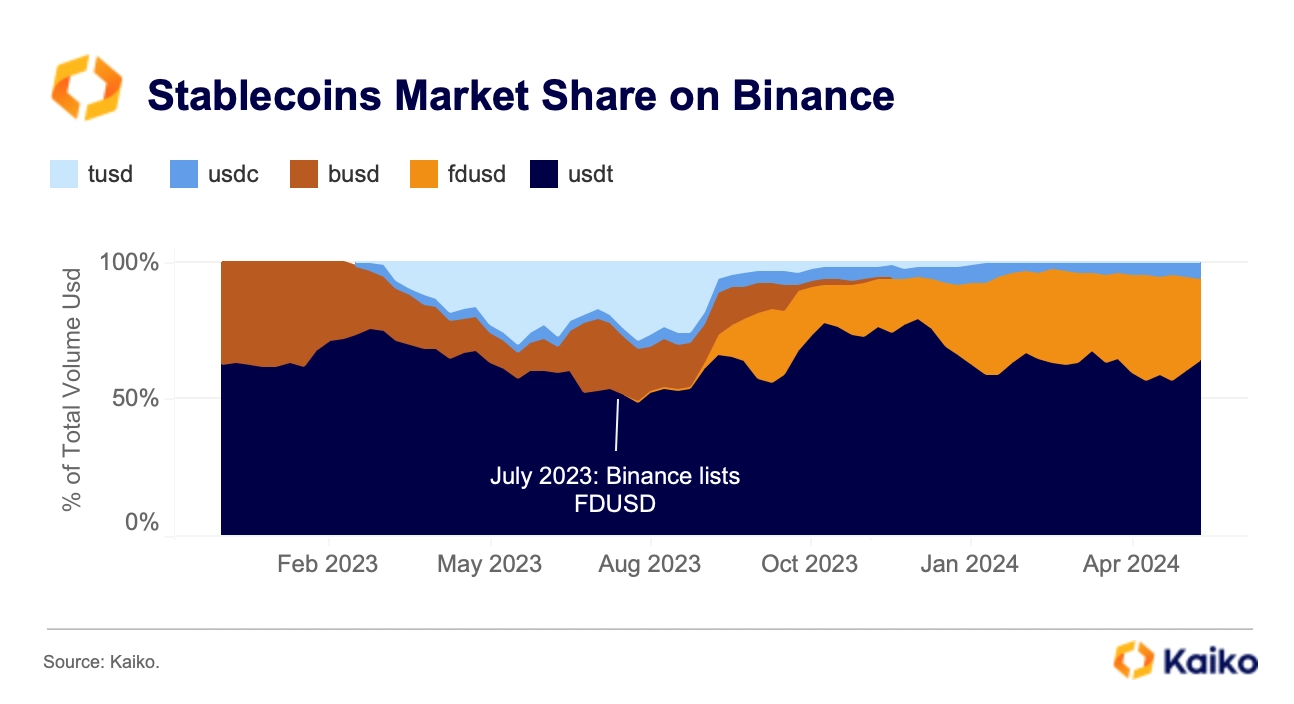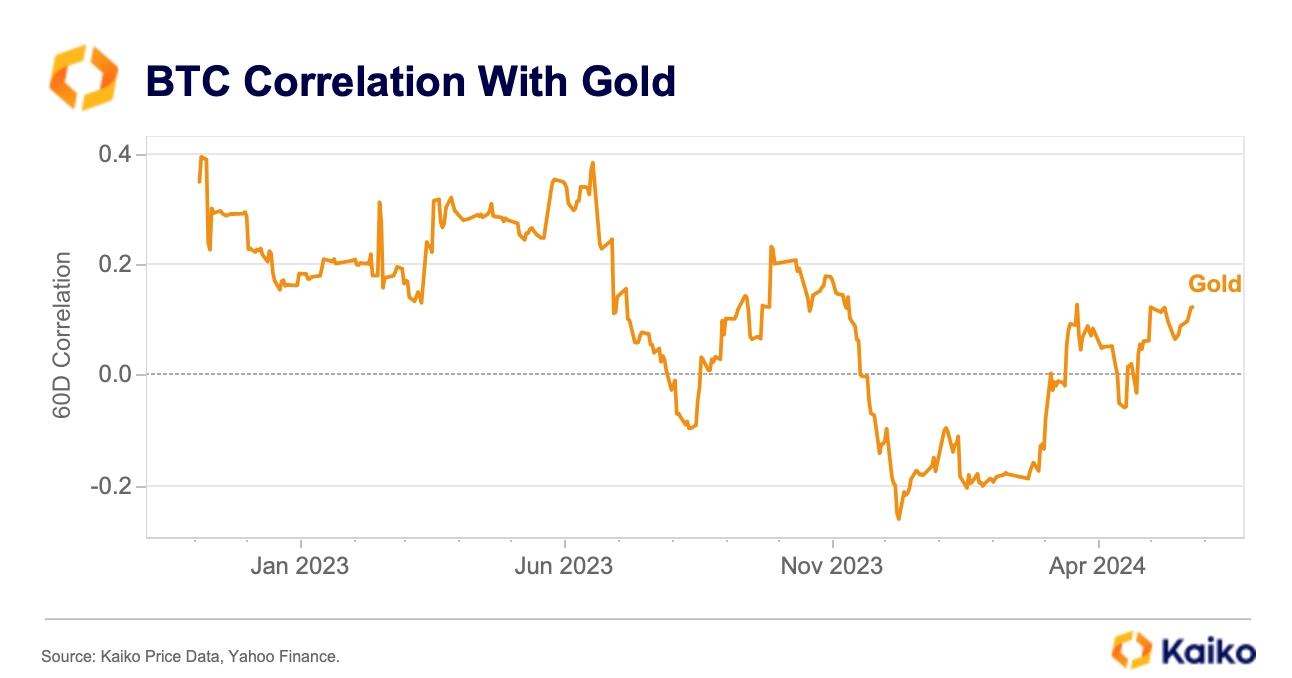Trend of the Week
Is ETH headed for a bull run?
Last week, the sentiment around ETH changed dramatically after the US Securities and Exchange Commission unexpectedly approved plans for spot ETH ETFs.
The regulator approved 19b-4 filings from NYSE, Cboe, and Nasdaq on Thursday evening. The regulator will now review S-1 forms from issuers such as BlackRock, Fidelity, and VanEck. Trading in ETH ETFs won’t begin until these forms are approved, meaning it could be several weeks before they’ll officially launch.
Will Cai, Head of Indices at Kaiko, commented: “With these approvals, the SEC implicitly stated that ETH (without staking) is a commodity rather than a security. This isn’t just about access to ETH, but has significant and likely positive ramifications on how all similar tokens will be regulated in the U.S. with respect to trading, custody, transfer, etc.”
Signs that an approval was likely appeared on Monday after several exchanges amended their filings to exclude staking, and Bloomberg raised its approval odds from 25% to 75%. As we wrote in our latest analysis, an ETF approval had been gradually priced out over the past month amid growing uncertainty around ETH’s regulatory status.
ETH implied volatility for the nearest expiry surged from less than 60% on May 20 to nearly 90% on May 22, before retreating by the end of the week.
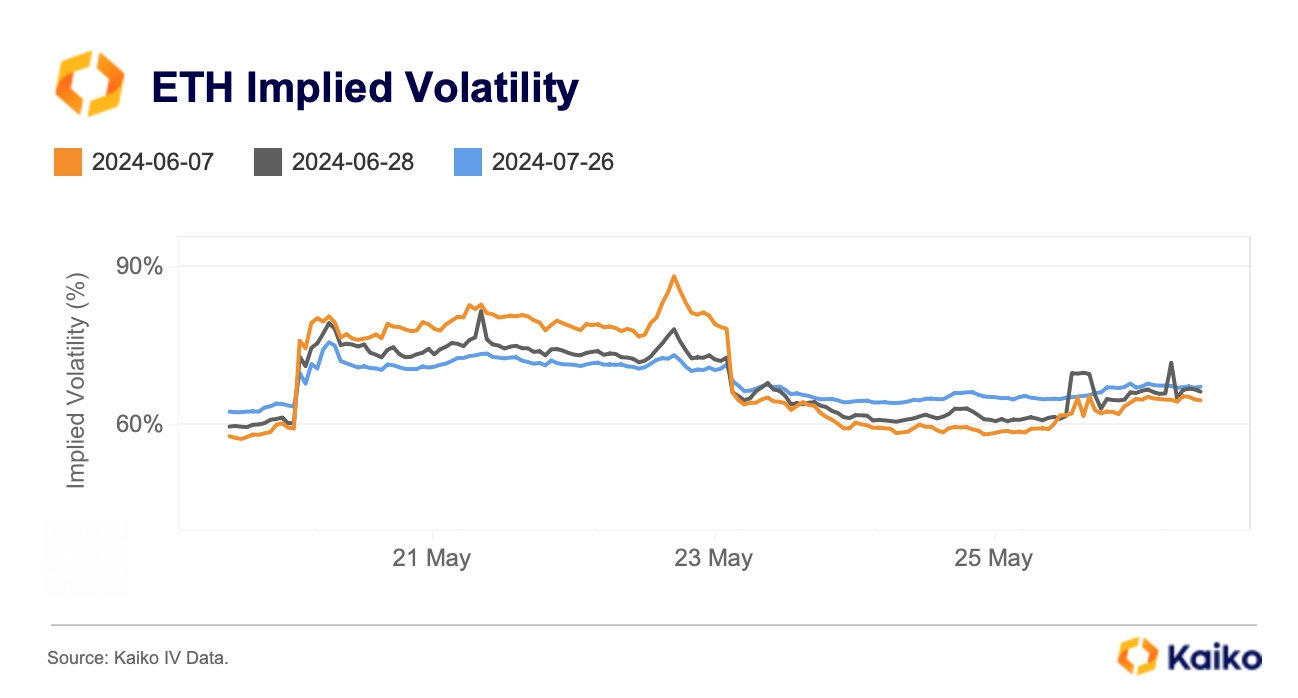
Additionally, the short-term implied volatility exceeded the longer-term gauges (commonly known as inverted volatility structure). This typically signals market stress, with a normal market structure for implied volatility seeing the longer-dated expiries with higher IV as more volatility should be expected over a longer timeframe.
The sharp turnabout in ETH sentiment was also evident in derivatives markets. Within just three days, ETH perpetual futures funding rates (orange) surged from their lowest level in more than a year to a multi-month high.
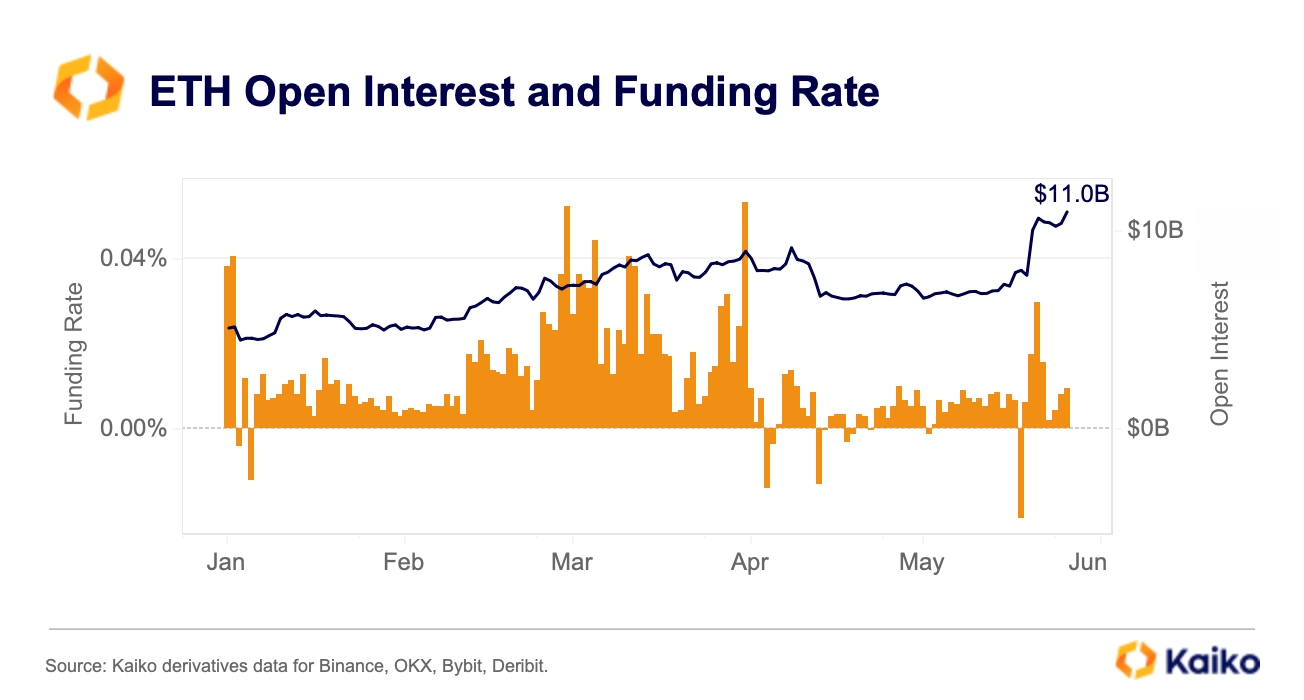
Open interest (blue) hit an all-time high of $11 billion, suggesting strong capital inflows into the space. The ETH to BTC ratio, which measures the two assets’ relative performance, also surged from 0.044 to 0.055 despite remaining below February highs.
Looking at ETH Cumulative Volume Delta (CVD), the rally was broad-based, with both US and offshore spot markets seeing strong net buying since May 21. Notably, until then, offshore exchanges were registering net selling.
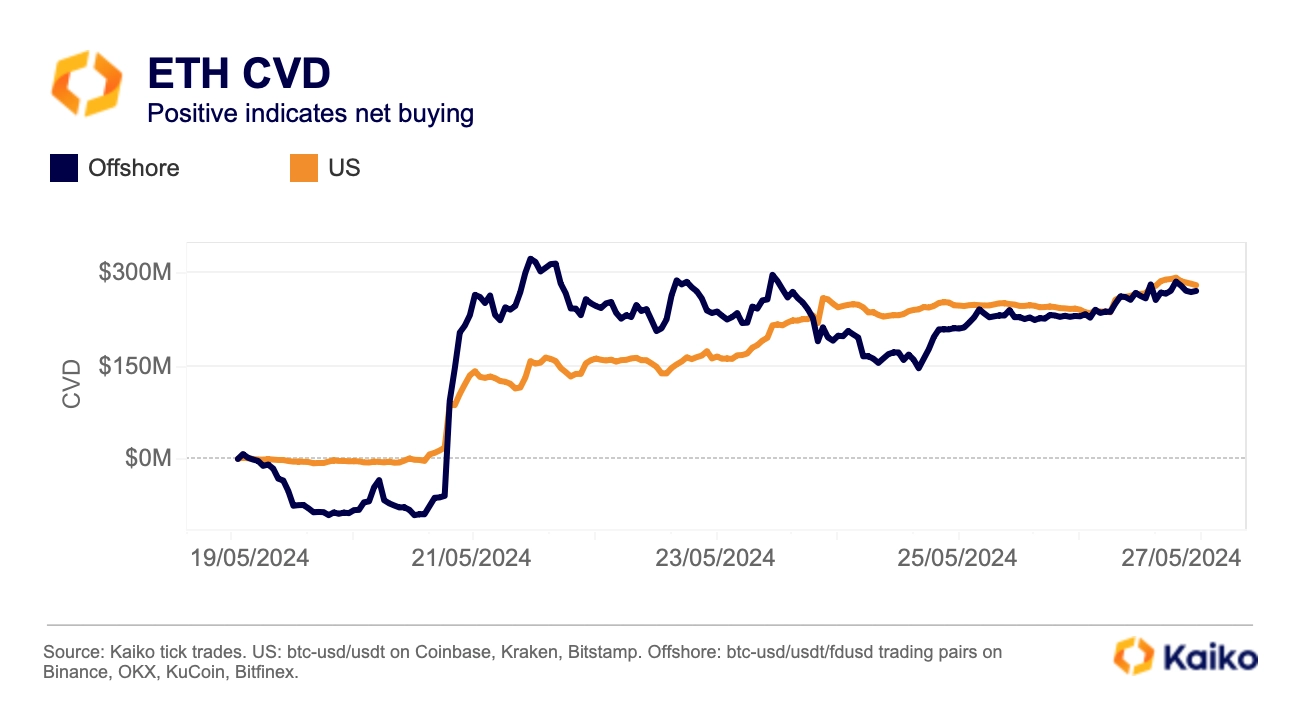
So, will ETH finally catch up to BTC?
Once the ETH ETFs launch, it is reasonable to expect selling pressure on ETH from likely outflows or redemptions due to Grayscale’s ETHE, which has been trading at a discount between 6% and 26% over the past three months.
ETHE currently has over $11 billion in assets under management, which makes it by far the largest ETH investment vehicle. GBTC’s outflows during the first month of trading for bitcoin ETFs amounted to $6.5 billion, which is roughly 23% of its AUM as of launch day.
Should we see a similar magnitude of outflows from ETHE, this would amount to $110 million of average daily outflows or 30% of ETH’s average daily volume on Coinbase.
However, by the end of January, GBTC’s outflows were offset and surpassed by inflows from other BTC ETFs. The overall market impact of ETHE’s redemptions is still uncertain, especially considering the lackluster launch of Hong Kong ETFs.
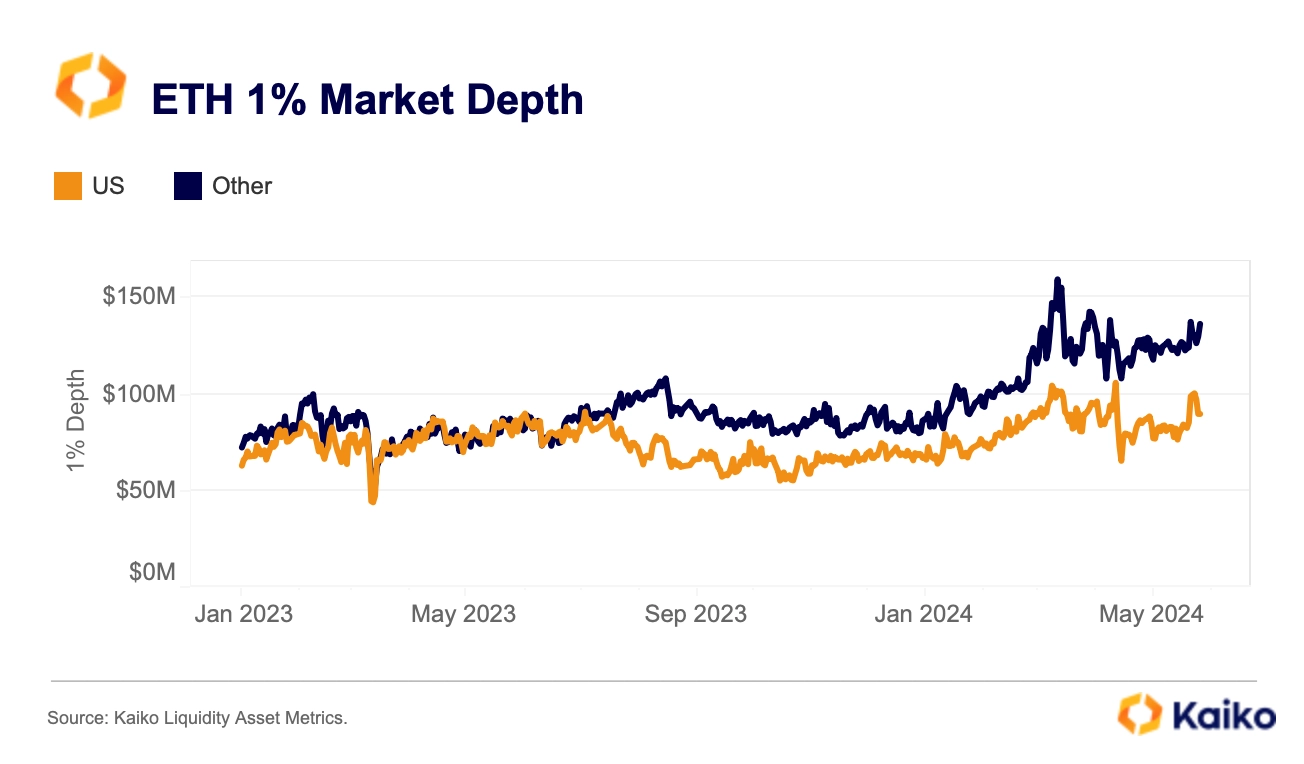
Adding to this, ETH’s market depth on CEXs is about $226 million, still 42% below its pre-FTX average levels, and only 40% is concentrated on US exchanges compared to around 50% in early 2023.
Overall, even if inflows disappoint in the short term the approval has important implications for ETH as an asset, removing some of the regulatory uncertainty which has weighed on ETH’s performance over the past year.


![]()
![]()
![]()
![]()







